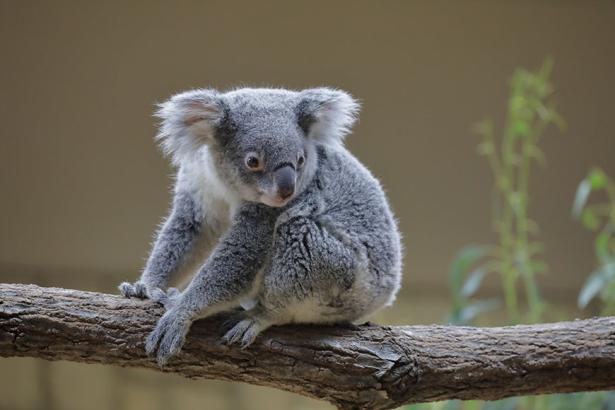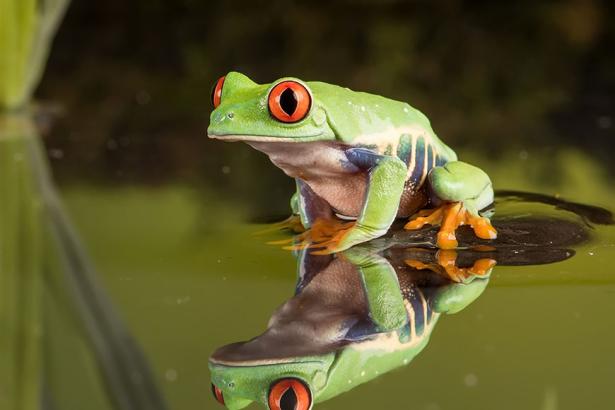Perches play an important role in maintaining the health of a bird’s beak, feet and claws. They also play an integral part in providing mental stimulation and occupational therapy for your pet. Parrots are “hard-wired” to chew. They need to chew to maintain their beak in tip-top condition.
The most desirable perches are those made from tree branches. However, you need to be careful in choosing the correct trees. Avoid exotic, ornamental, garden plants as many of these can be toxic to your parrot. Avoid trees with milky, white sap. Stick to Australian native trees (we know they don’t poison our birds) Rough bark is better than smooth bark. The best perches are made from wattle, bottle brush, melaleuca, ti-tree, paper bark, iron bark. Perches should be wide enough for a bird’s feet to be evenly spread over the top of the perch. Budgies and canaries should have perches the size of a “broom stick”. Perches for a cockatiel should be one and a half times the size of a broom stick. Galahs should have a perch 2 – 3 inches in diameter. Sulphur crested cockatoos and Macaws should have perches 3 – 5 inches inches in diameter. When a bird has chewed the bark from the perches, throw them out and replace them.
Narrow perches that require a bird to grip tightly, with their claws meeting underneath, are the equivalent of a person wearing shoes that are too tight. Narrow perches put too much pressure on the “ball” of the foot and can cause pressure sores in obese birds. Smooth, narrow perches don’t allow nails to wear naturally and the bird’s claws can become long and overgrown.
Perches play an important role in maintaining the health of a bird’s beak, feet and claws. They also play an integral part in providing mental stimulation and occupational therapy for your pet. Parrots are “hard-wired” to chew. In fact they need to chew to maintain their beak in tip-top condition. Therefore, perches should be regarded as disposable. Don’t be like one of my clients who said, “The bird kept chewing up his wooden perches, so I replaced them with a galvanized water pipe.” Not only was he depriving his parrot of the only means of chewing in his cage, but he was also potentially poisoning his pet with the galvanized metal.
The most desirable perches are those made from tree branches. However, you need to be careful in choosing the correct trees. Avoid exotic, ornamental, garden plants as many of these can be toxic to your parrot. Avoid any trees with milky, white sap. Stick to Australian native trees (we know that they don’t poison our native birds). Rough bark is better than smooth bark. Rough bark perches are like Dr. Scholl sandals for our feet. (They massage the soles of the feet). The best trees for perches are wattle, bottle brush, melaleuca, ti-tree, paper bark, iron bark. Perches should be wide enough for a bird’s feet to be evenly spread over the top of the perch. Budgies and canaries should have perches the size of a “broom stick”. Perches for a cockatiel should be one and a half times the size of a broom stick. Galahs should have a perch 2 – 3 inches in diameter. Sulphur Crested Cockatoos and Macaws should have perches 3 – 5 inches in diameter. When the bird has chewed the bark from the perches, throw them out and replace them. Any moss and lichens on the bark of native trees are harmless to your bird. They just provide extra nutritional and occupational enrichment.
The doweling perches that are supplied with cages are too narrow and smooth for a bird’s comfort and health. Narrow perches that require a bird to grip tightly, with their claws meeting underneath, are the equivalent of a person wearing shoes that are too tight. Narrow perches put too much pressure on the “ball” of the foot and can cause pressure sores in obese birds. Smooth, narrow perches don’t allow nails to wear naturally and the bird’s claws can become long and overgrown. Some manufacturers try to overcome this problem by covering, smooth, narrow perches with sandpaper. Supposedly this is to “file down” the bird’s claws. However, because the diameter of the sandpaper perches is too narrow, the bird’s claws don’t touch the abrasive surface. Instead, the skin of the foot can become abraded and contaminated by droppings, resulting in infections.
I also warn clients about using rope and fabric perches. I have treated many birds suffering from fibre impaction that is the end result of chewing on rope perches and tassely toys. Many times, the impaction is so severe, that the birds do not survive. Stick with what’s natural. Don’t just limit rough barked, native branch perches to the cage, include them also on the “training T perch” and the “play gym”. Holes can be drilled in the natural perches. Fresh grass seeds, green leafy branches and native blossoms can be placed in the drilled holes for the added enrichment and enjoyment of your parrot.
Suitably sized, rough barked, native branch perches go a long way to maintaining well-groomed, healthy beak, feet and claws for your parrot. They also fulfil a parrot’s instinctive need to chew and forage.
FAQs
It is crucial that owners understand what type of perches they should be providing for their parrot to ensure they have a healthy, happy life. Perches should be natural wood branches, preferably with the bark still attached, as this provides a source of environmental enrichment – parrots love to chew! For more information consult with your local animal hospital for birds.
Avoid wooden dowels, plastic or metal perches. Natural branches are a far better choice as they provide more variation in size and texture than man-made perches. Your local bird and exotic clinic can give you advice on the right types of perches for your bird.








Be aware natural branches can spread lice and mites from wild populations of birds. I’m going through this now. I picked up branches from under a tree where lorikeets feed and perch. I am intending to spray new branches with tea tree oil then leave a few days before using to overcome this problem.
Awesome info! Do you have to bleach or clean the branches? A friend who had an imported parrot said branches can give the birds diseases. But we have budgies- so natives should be ok?